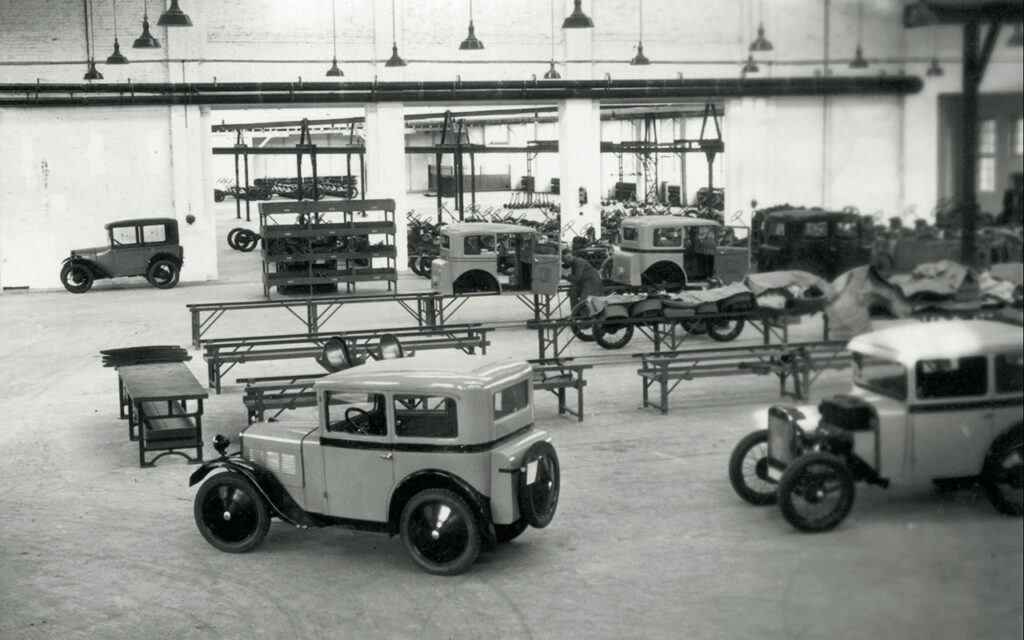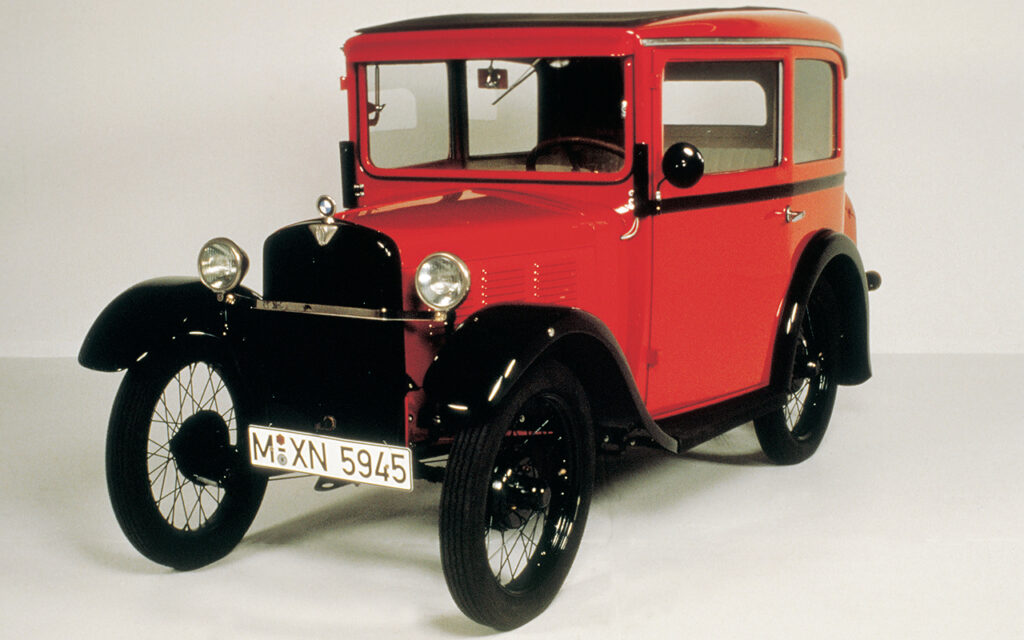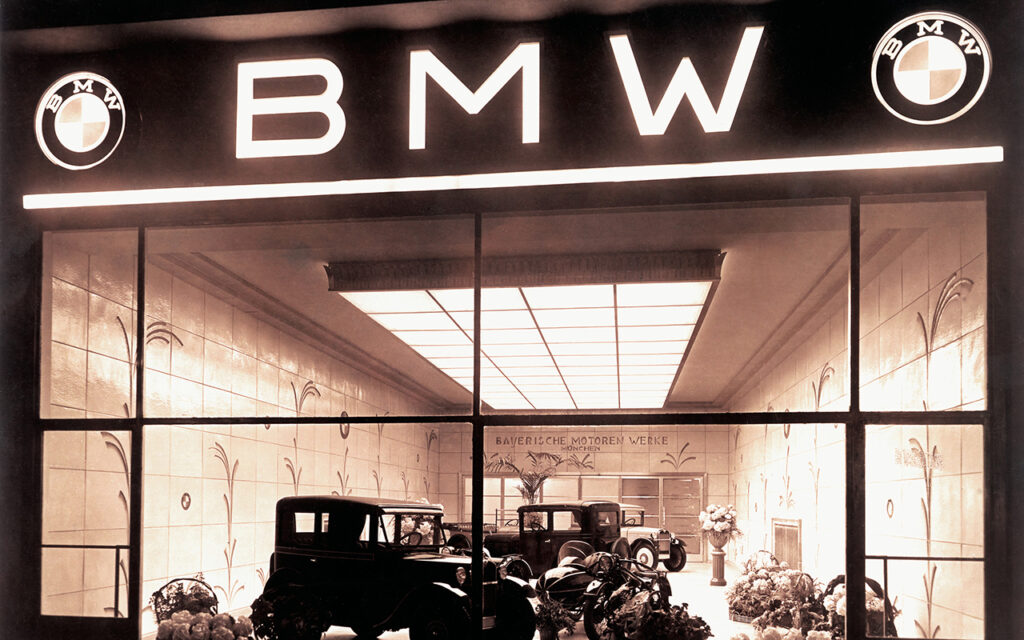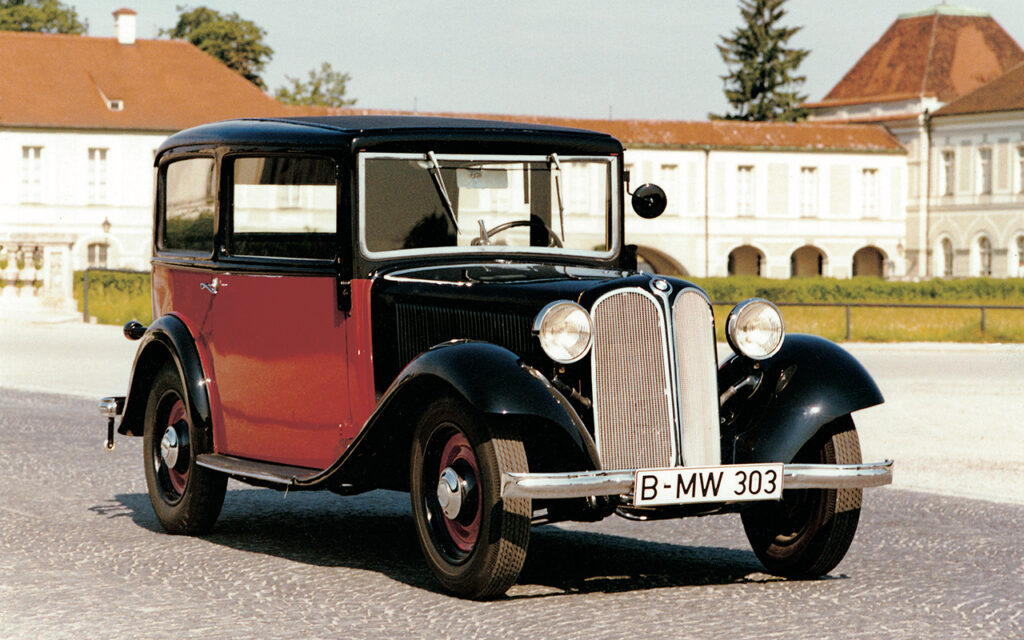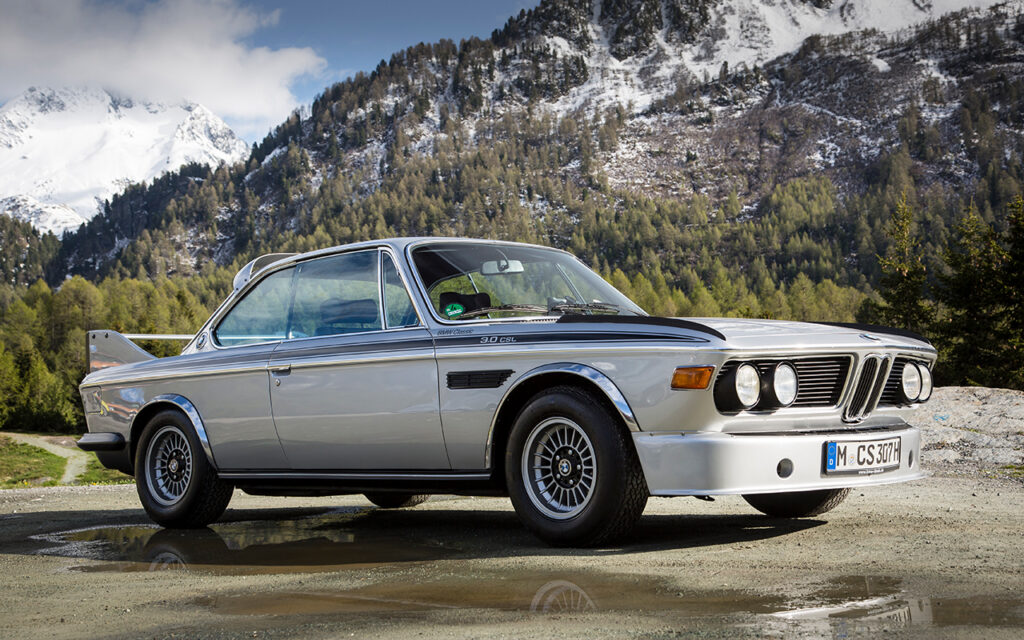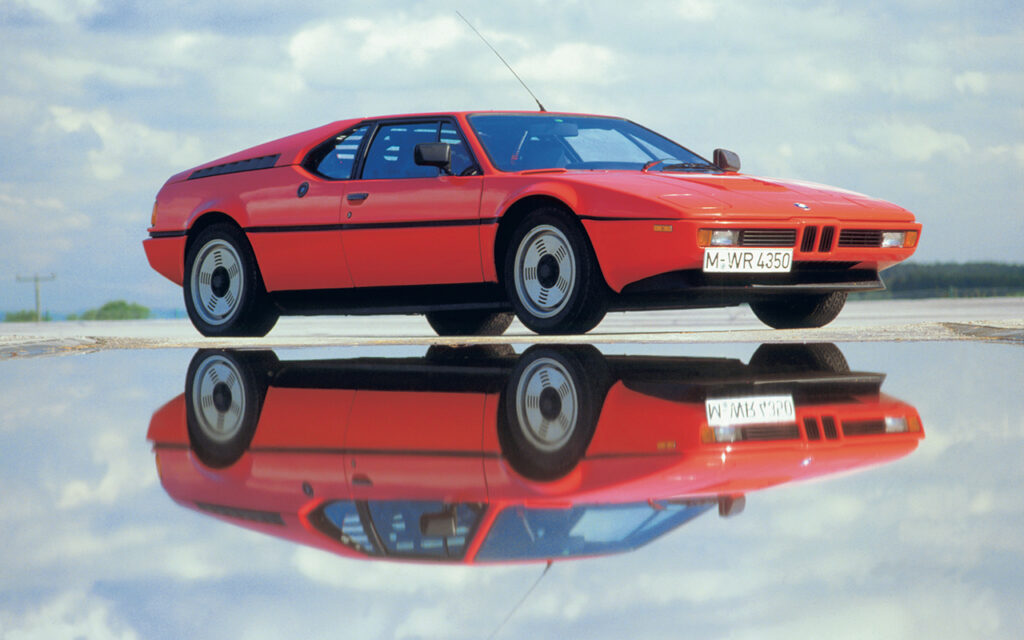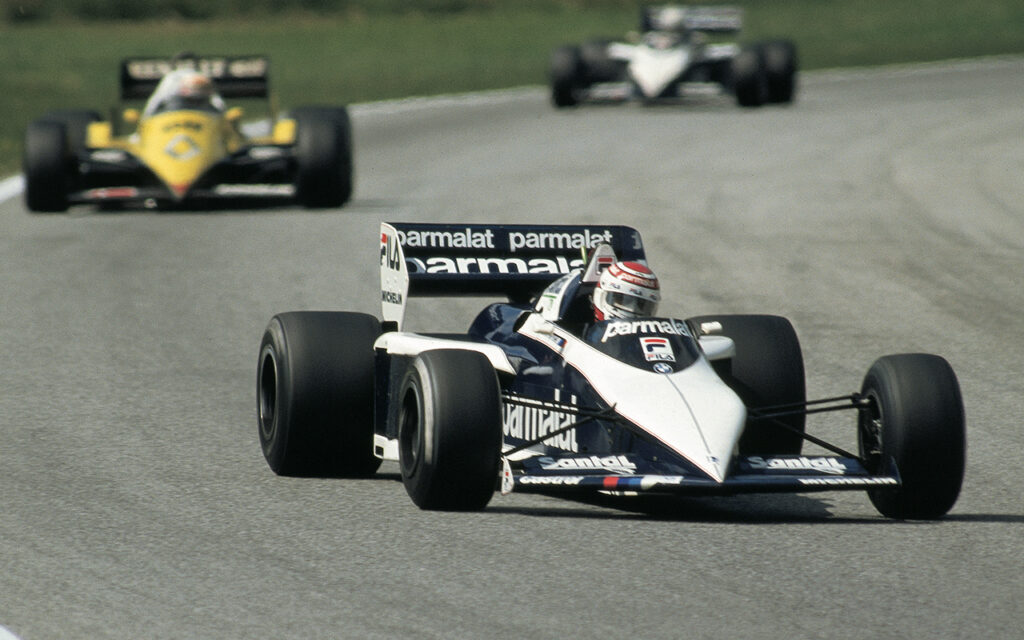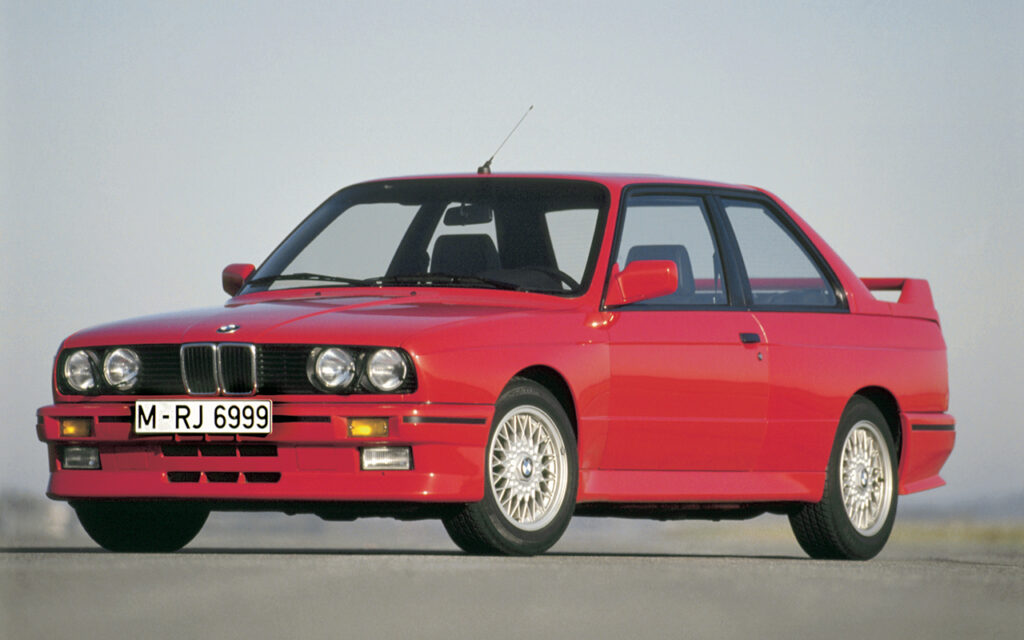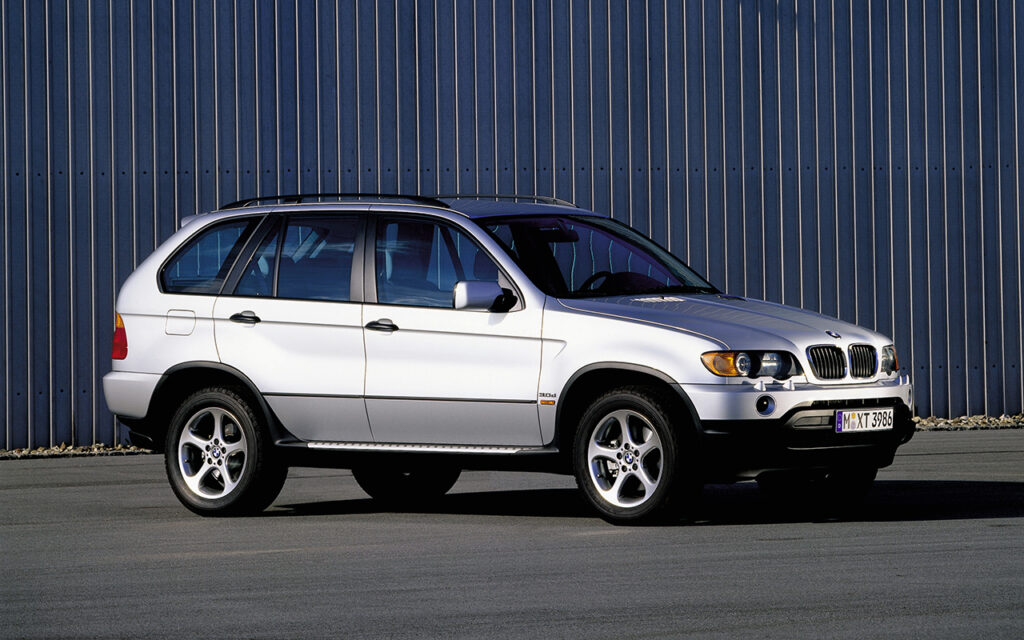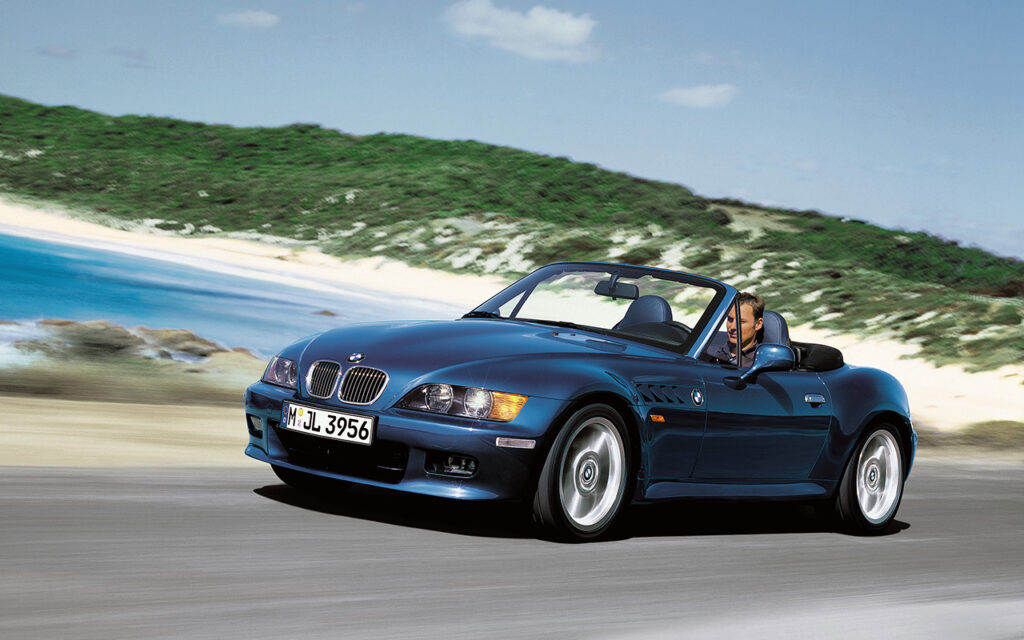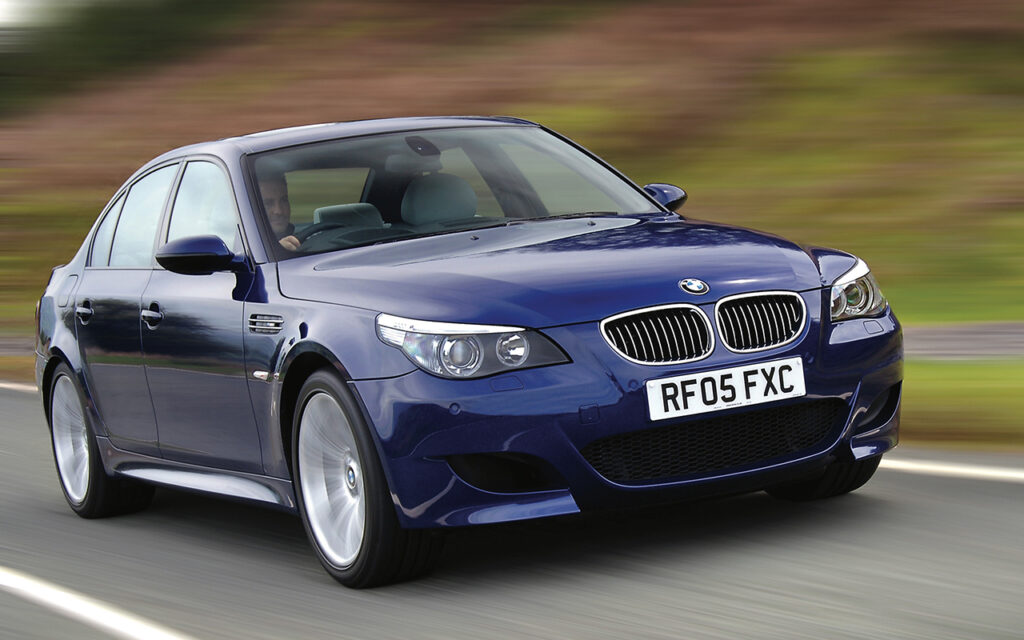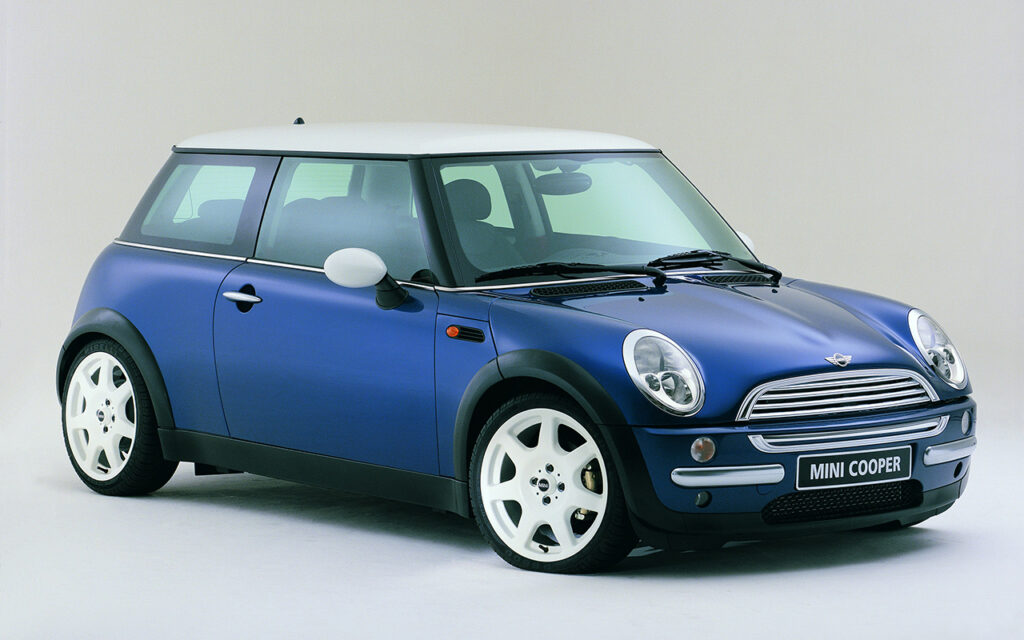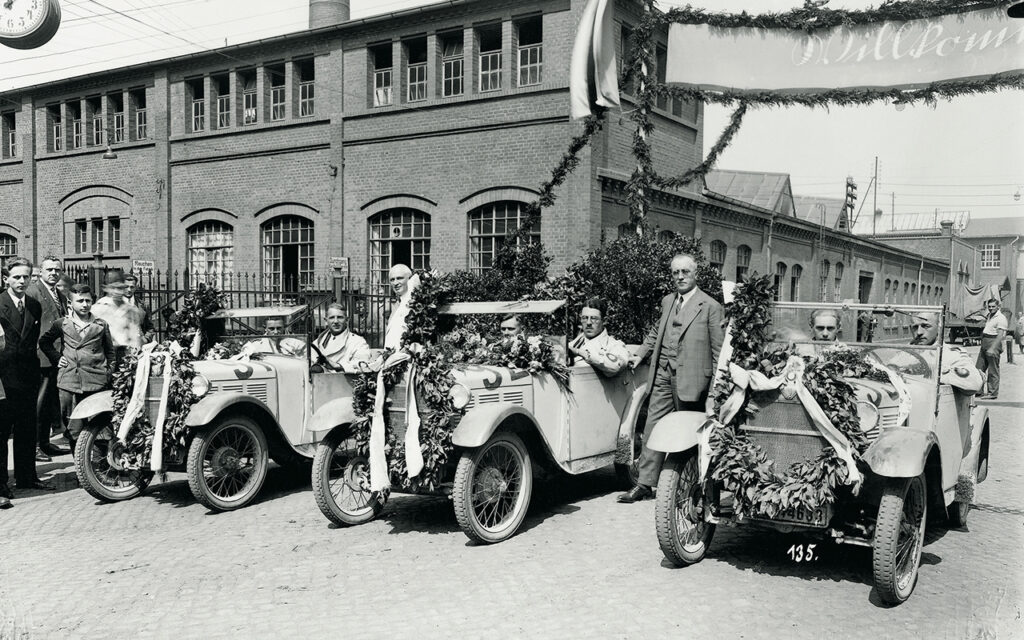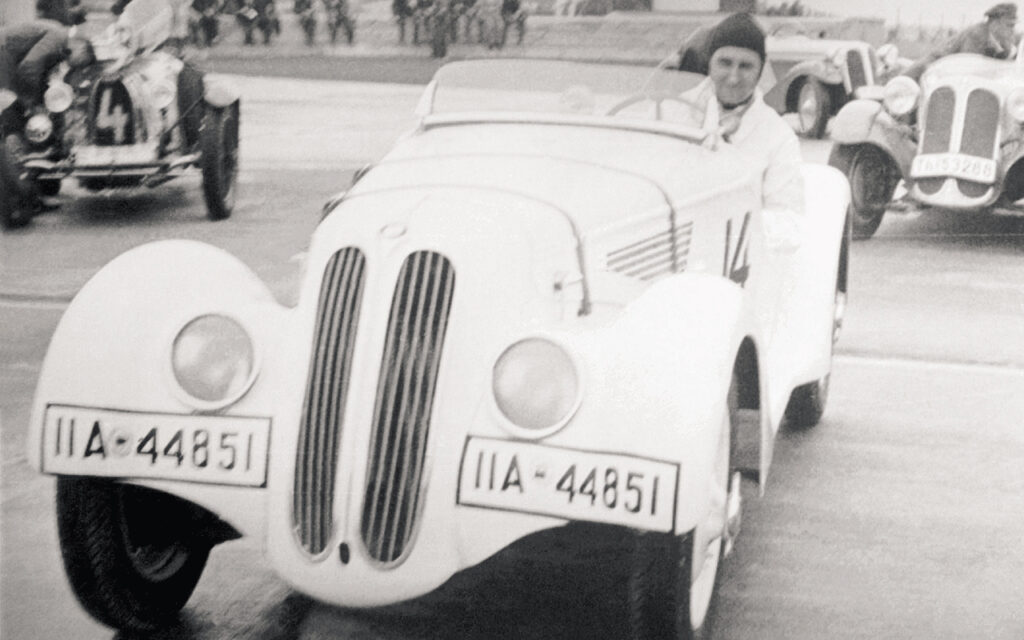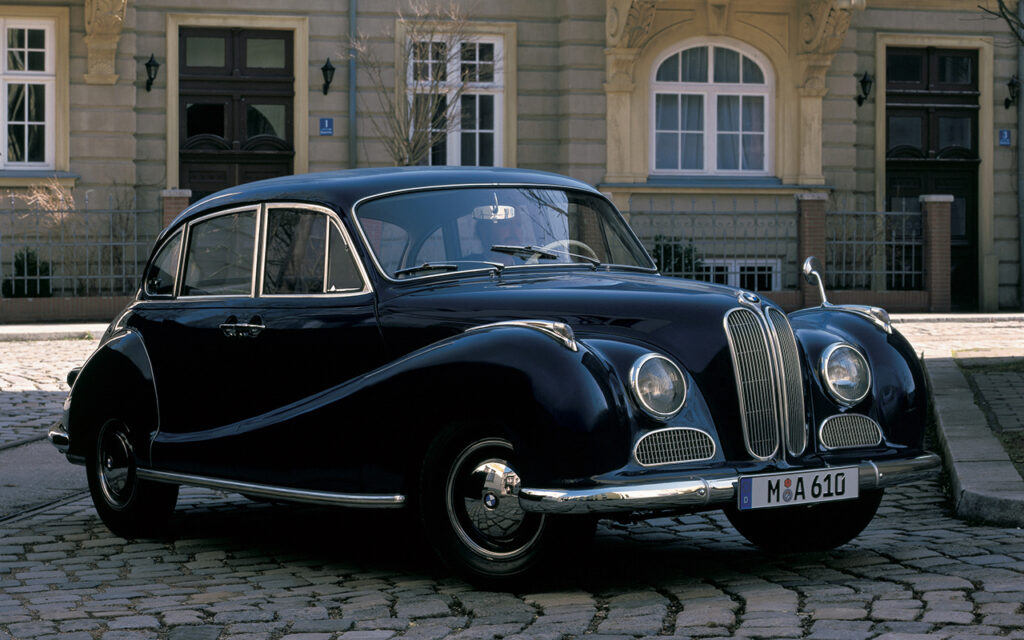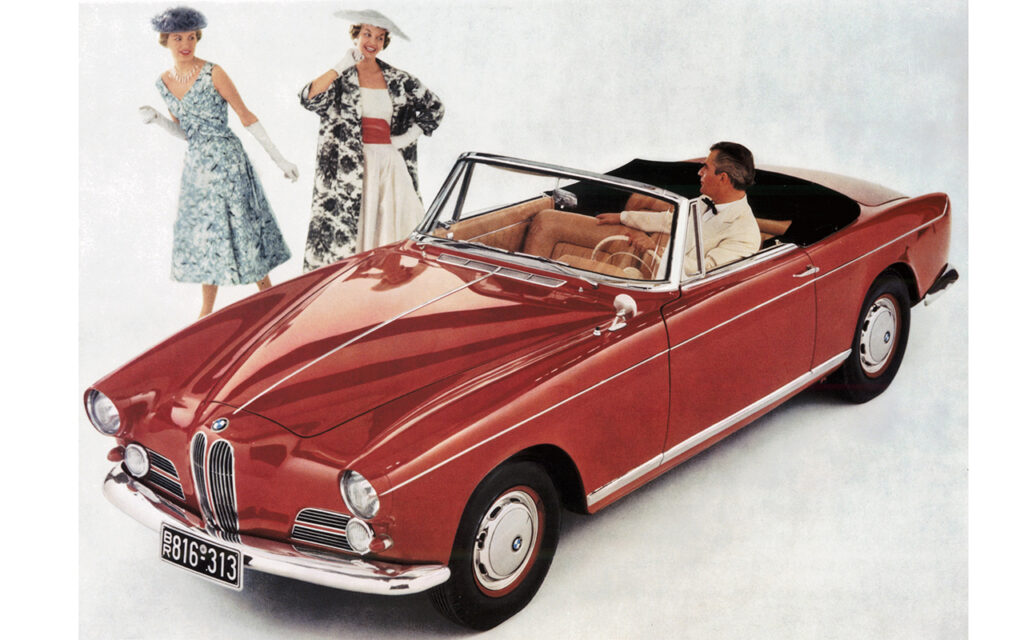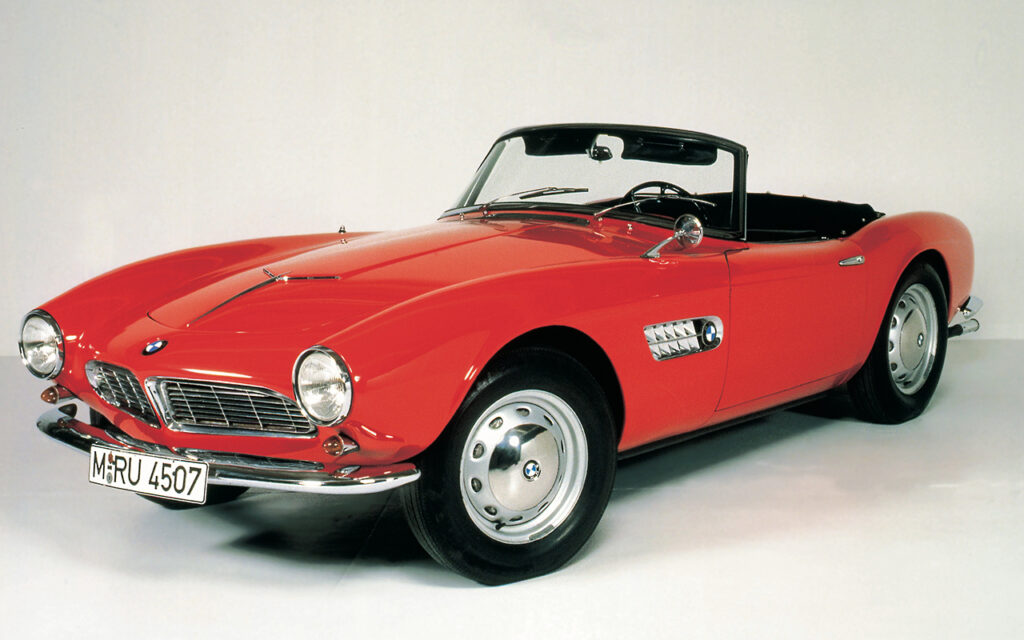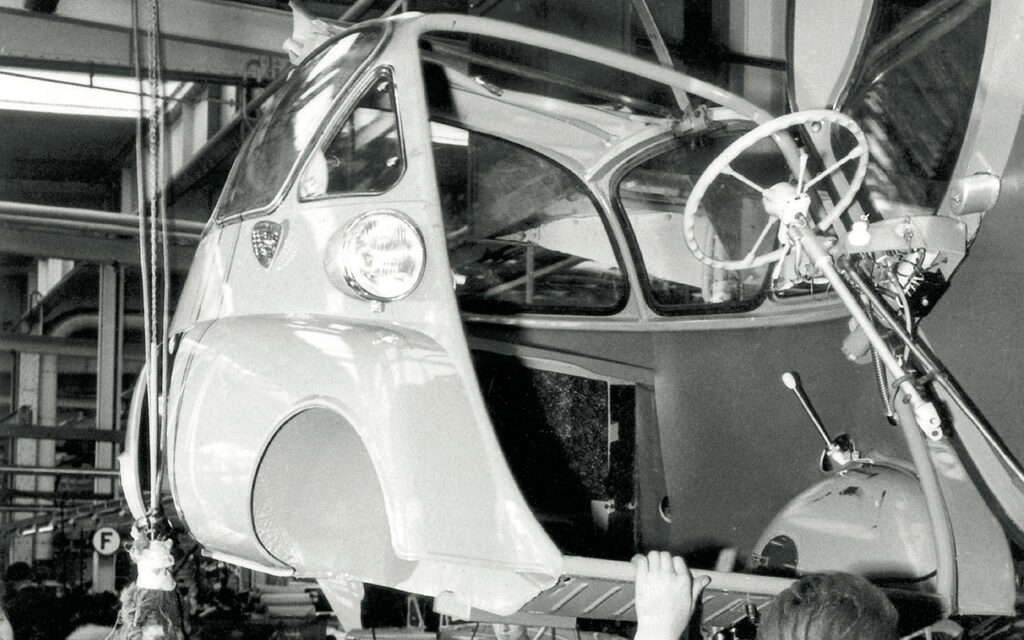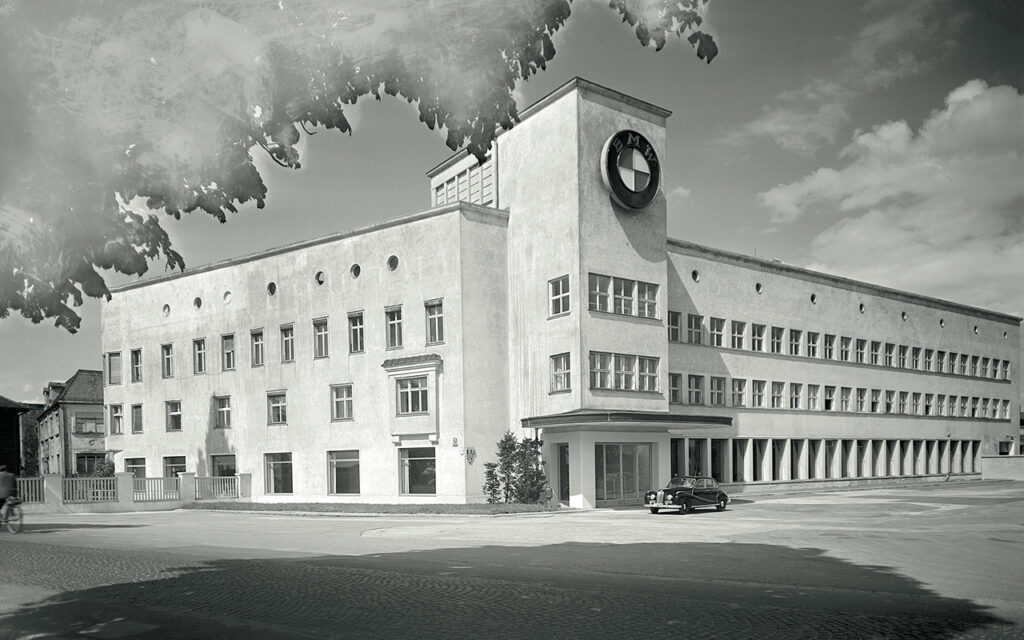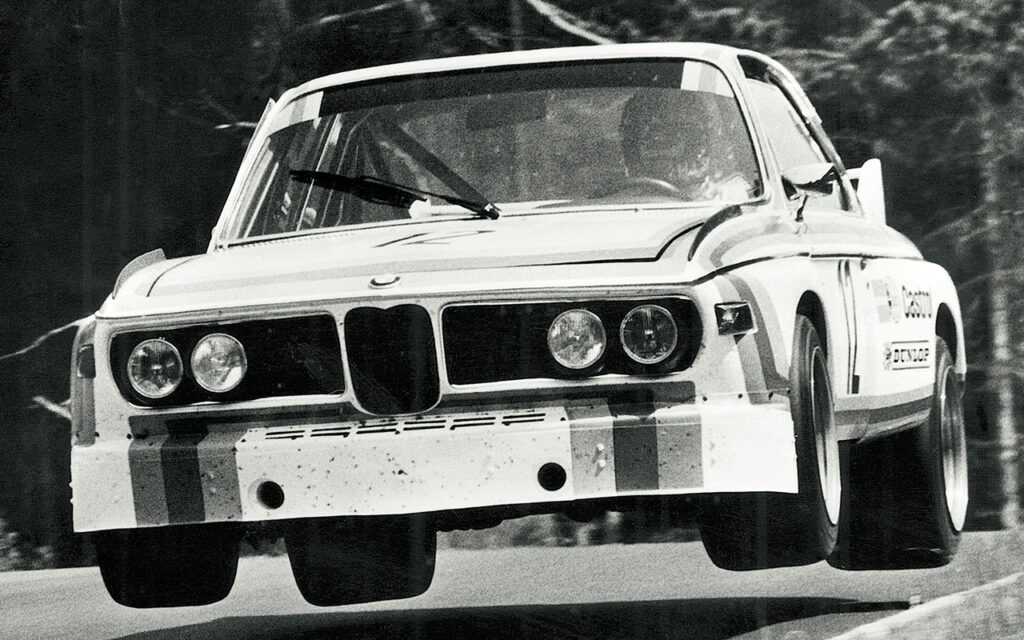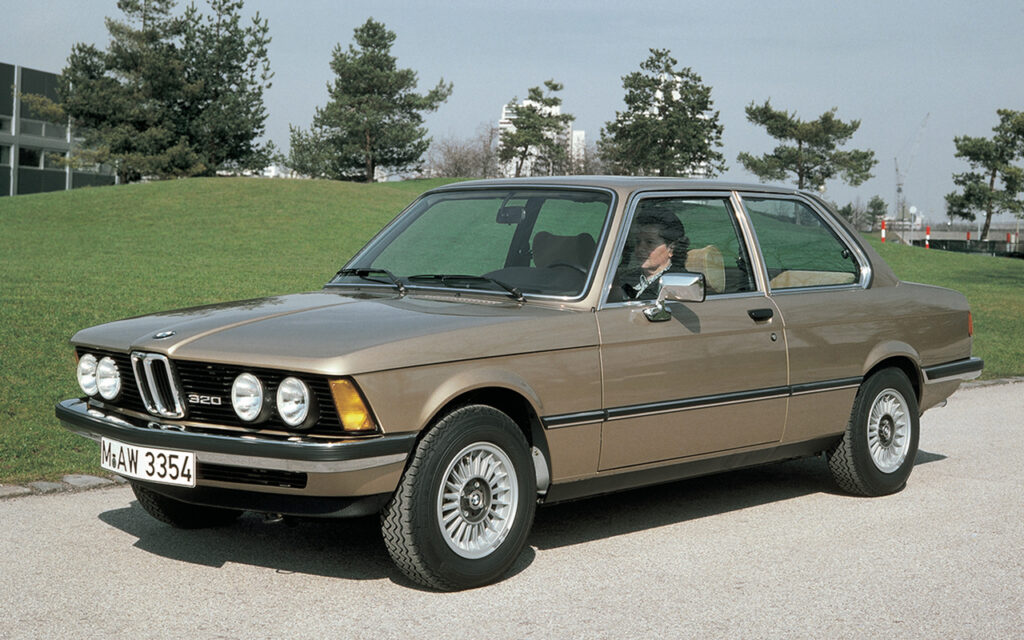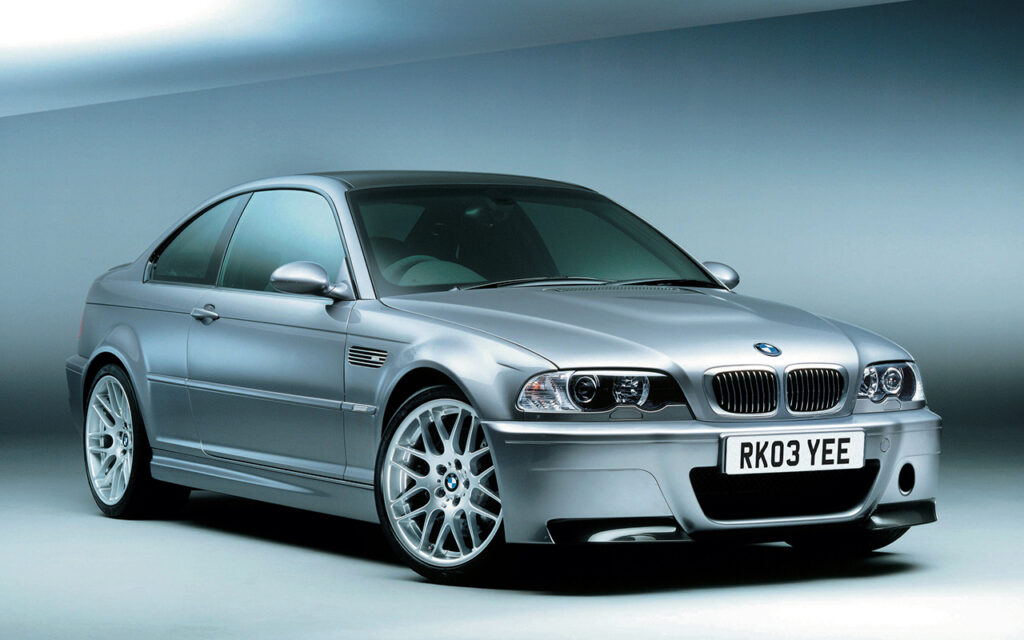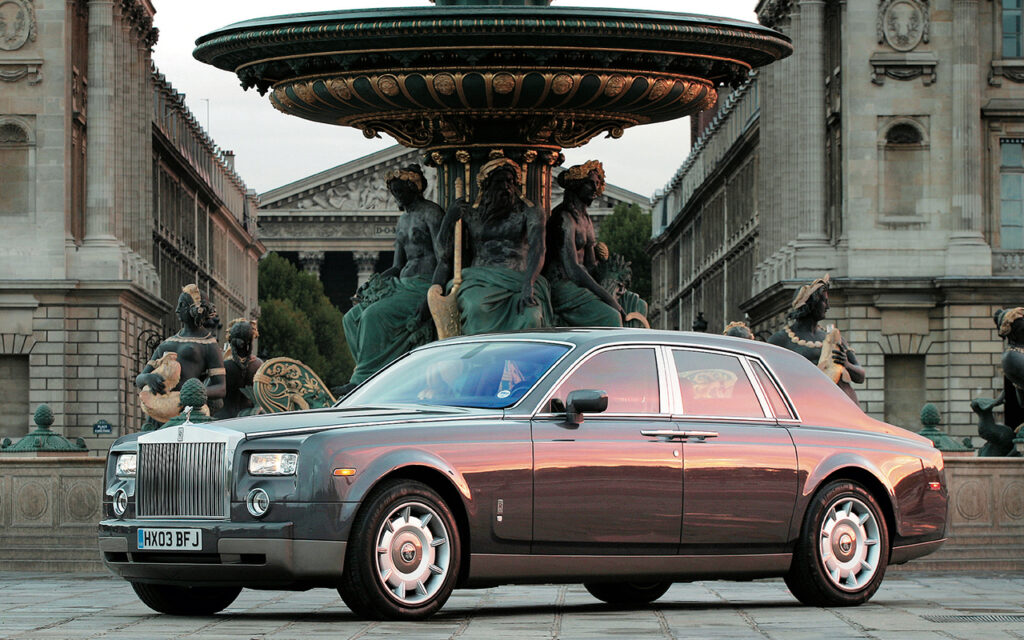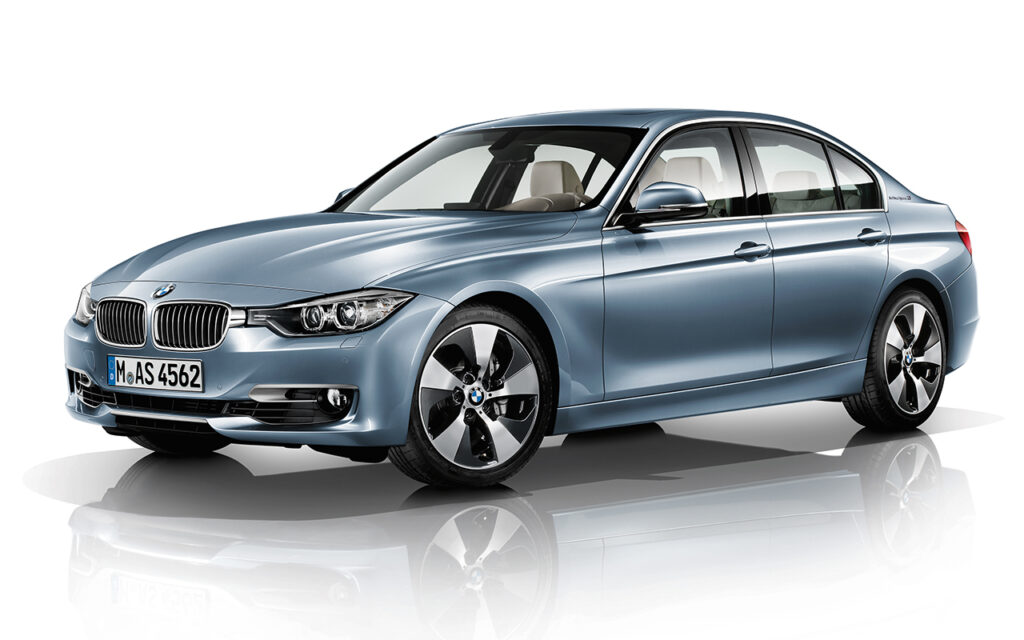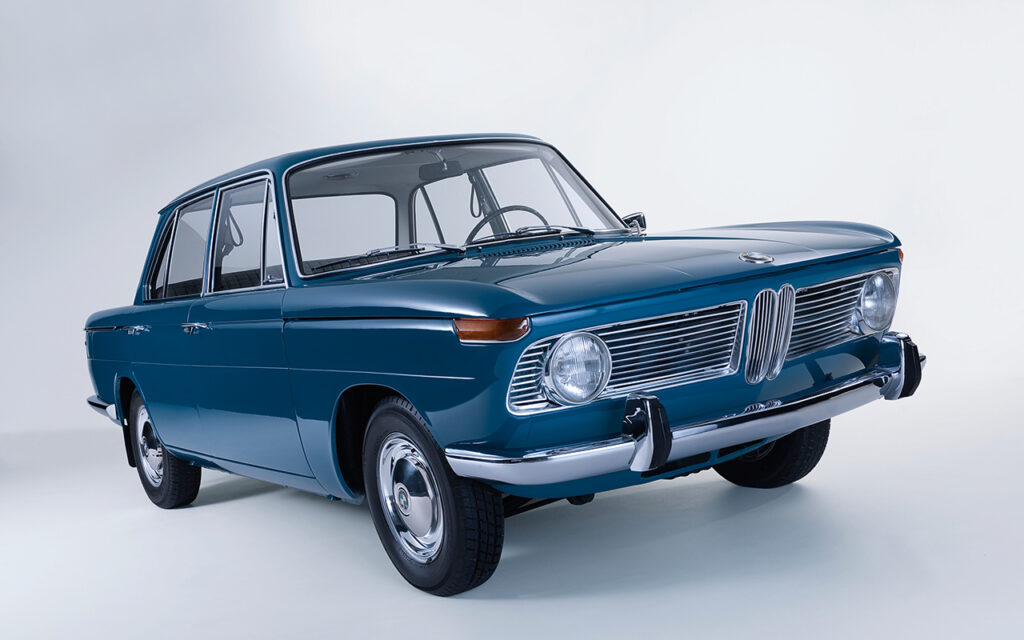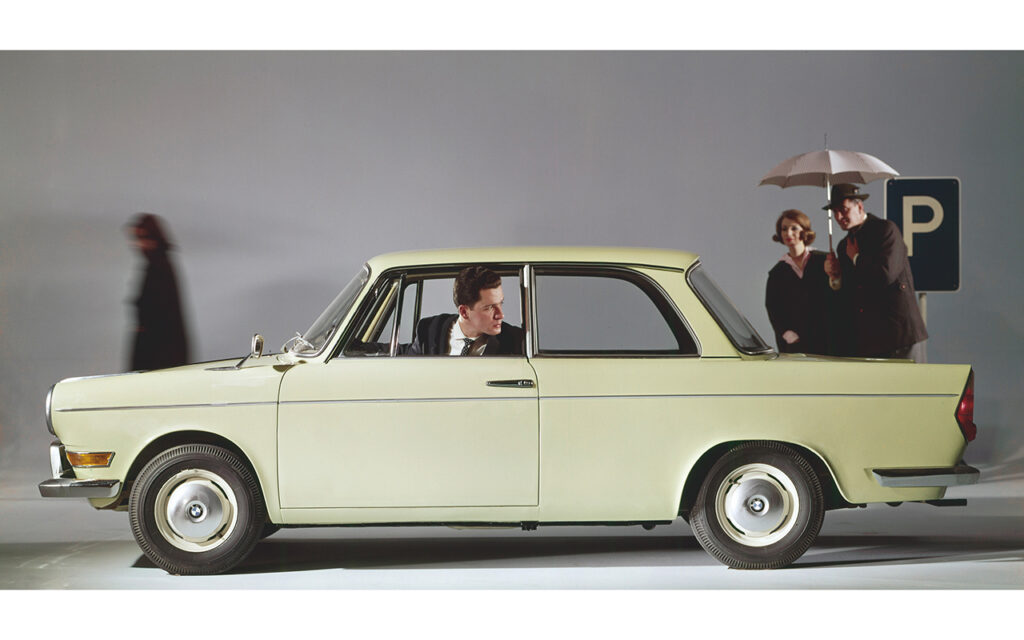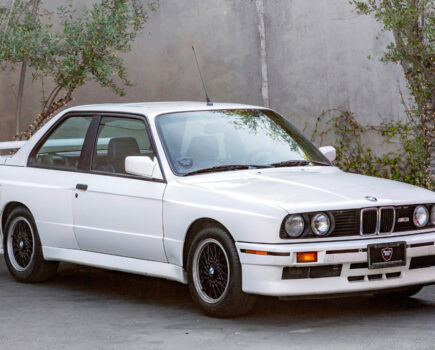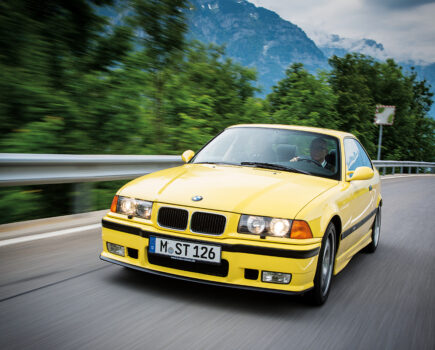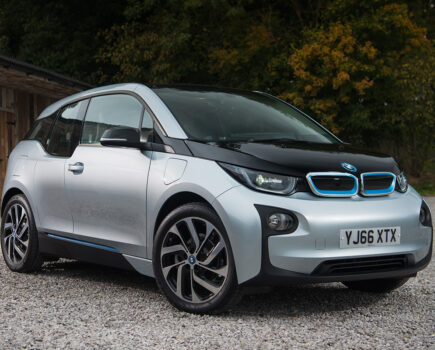BMW – Bayerische Motoren Werke (Bavarian Motor Works) – saw plenty of peaks and troughs on its journey to becoming a highly successful manufacturer
Words: Bob Harper
BMW can trace its origins back to Rapp-Motorenwerke, a manufacturer of aircraft engines during the First World War which changed its name firstly to Bayerische Flugzeugwerke AG in 1916 and then to BMW in 1917.
In the beginning, BMW was a long way from motor car production; aircraft engines were its business and the first wholly BMW designed unit, the BMW IIIa penned by engineer Max Friz, was renowned for being the best of its generation. The engine would go on to bag the world record for altitude at 32,000 feet – not bad for 1919. Despite the promise of its aircraft engines, BMW was banned from producing them under the terms of the Treaty of Versailles after the First World War and turned its hand to the production of various other mechanical items including brakes for trains – and motorcycle engines.
BMW was highly successful in these enterprises; in 1920 it relocated its main headquarters to Munich and in 1923 it launched its first-ever vehicle, the R32 motorcycle. It was an excellent design featuring a boxer engine designed by aero engine engineer Max Friz; BMW’s use of such engines in its motorbikes became a trademark that continues today.
Buoyed by its early success, BMW purchased the Fahrzeugfabrik Eisenach company in 1928. Based in the Thuringia region of Germany, the company was producing the ‘Dixi’ an Austin Seven under licence. A year later the first BMW-badged car was born, the BMW 3/15 PS DA2, based on the Austin Seven but with numerous improvements engineered into the car by BMW.
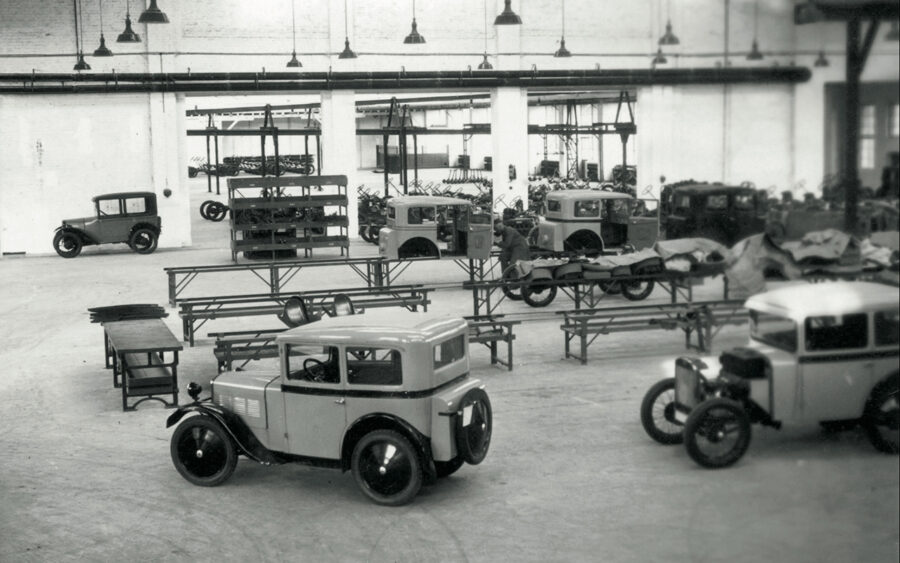
To prove its new car was up to the job, BMW immediately entered the 3/15 PS into the competitive arena of international motorsport, with three examples piloted by Max Buchner, Albert Kandt and Wilhelm Wagner entering the International Alpine Rally. They drove over 2,650 kilometres to take victory without accruing a single penalty point and averaged 26mph.
At the time, the leading German motoring publication Automobilzeitung said: “BMW amazed the entire motoring world by putting on a flabbergasting performance.” It was the company’s first motor car race – and its first victory; the era of BMW motorsport had begun. Since then, the marque has become synonymous with not only sporty road cars but success on the racetrack.
1930s
The success of the 3/15 PS BMW launched a series of machinery based on this concept, and powered by the diminutive four-cylinder engine, but it was the arrival of the 303 in 1933 that underlined BMW’s intention to be a manufacturer of more luxurious cars – complete with six-cylinder power.
The theme was explored with a variety of different models, and culminated with the debut of the iconic 328 in 1936. This was an out-and-out sportscar that demonstrated that intelligent lightweight design could reap rewards, and despite having a capacity of just two litres was a phenomenal machine. It was revealed to the world at the Nürburgring racetrack and won on its debut, beating the opposition in its class by a country mile. Streamlined versions of the 328 would go on to class wins at Le Mans and would win the Mille Miglia outright in 1940.
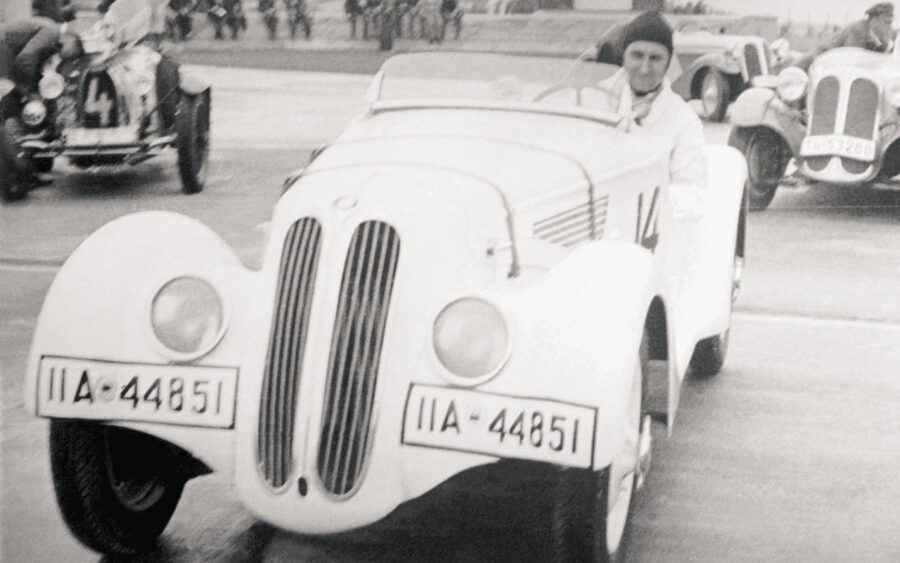
By now, the world was in the grip of the Second World War; the 328’s competition wasn’t quite as stiff as it might have been and despite the success of BMW’s road cars during the 1930s – and its obvious engineering prowess – it was once again its aircraft engine production that became most important. As the National Socialists embarked on Germany’s re-armament, BMW expanded, took on new sites and developed and produced engines for the war effort.
1940s
As the war ended BMW’s fortunes took a serious nose-dive as allied soldiers requisitioned and occupied its plants. BMW had been classified as an armaments company and so its machines and tools were dismantled; meanwhile, its plants in Eisenach and Berlin ended up in East Germany and no longer under its control.
Stop-gap production of household appliances continued in Munich but it wasn’t until 1948 that BMW was able to restart vehicular production with the R24 motorcycle. While it was based on a pre-war design it was very popular, selling over 9,000 examples during 1949 and this helped to keep the company afloat until the 1950s when automobile production could restart.
1950s
BMW’s first car of the 1950s was the 501, a large luxury saloon that would also be offered as a coupe and a convertible as the decade progressed. Initially it utilised an updated version of BMW’s pre-war six-cylinder engine along with the suspension design from the 1930s but performance was somewhat pedestrian; as the 501 was aimed at the upper end of the market, it struggled to sell to what was still a cash-strapped German population.
The performance issue was addressed by the introduction of a V8 engine, the world’s first with an alloy block and cylinder heads in the visually similar 502, but despite this forward-thinking engineering it didn’t make the car a big seller. Instead of introducing a lower-priced model that would have greater mass-market appeal, BMW went further upmarket with an elegant coupe and convertible designed by Albrect Graf Goertz – the 503. This car was a hard sell, even in America where BMW was trying to establish a presence.
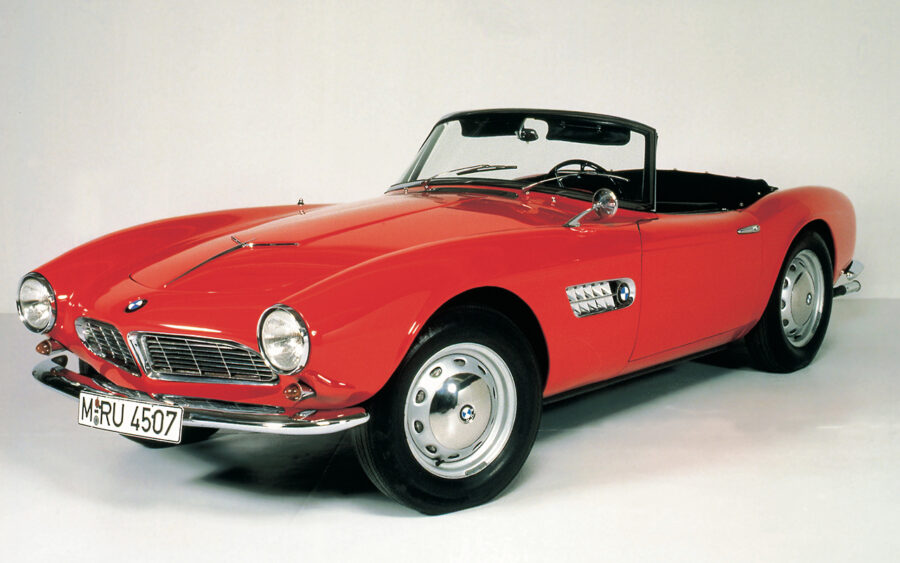
Imports to American were handled by Max Hoffman, an automotive entrepreneur who was keen to establish the BMW brand. To do so he argued that he needed an affordable, stylish sports car to compete with other imported marques and home-grown American machinery.
Enter the 507, one of the most iconic BMW designs of all time. It was once again penned by Graf Goertz and had a timeless elegance and decent performance from its 502-dervied V8 engine. Sadly for BMW it didn’t have mass-market appeal as its hand-beaten alloy panels made it hugely expensive to produce; just 254 were made. A failure in its day perhaps, but it’s now one of the most expensive classic BMWs and hugely coveted among collectors.
BMW finally saw the need for a mass-produced model in the mid-1950s and purchased the rights from Italian company Iso to produce what would become the Isetta bubblecar – a three-wheeler powered by a BMW motorbike engine. It helped to keep the company afloat but by this time the German middle classes were getting back on their feet and were looking for a mid-range form of transport – not a slightly ungainly three-wheeler. BMW responded by designing and launching the 700, a more conventionally styled small saloon, still powered by a motorcycle engine, that entered the market in 1959. It would go on to be a big seller and with coupe, convertible and competition versions it’s oft credited as being the car that saved BMW.
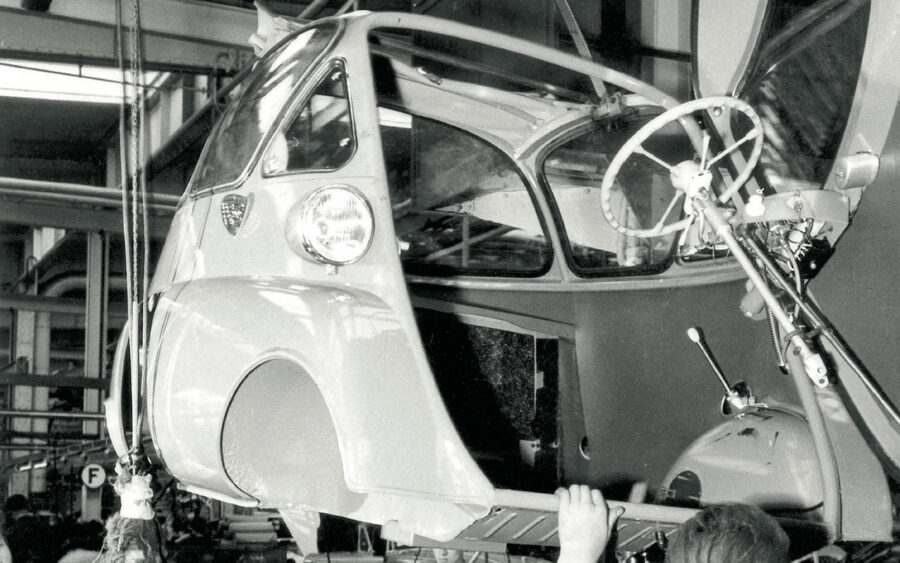
And BMW definitely needed saving because as the decade progressed its finances became ever more precarious. In 1959 arch rival Daimler-Benz tabled a motion to take over the company – it wanted BMW’s plants to manufacture its trucks – but the BMW shareholders rejected the proposal. The company was saved by financier Herbert Quandt who extensively expanded his shareholding in BMW which secured its future prosperity with the Quandt family remaining as the major shareholder in BMW right up to the present day.
1960s
With its financial backing secured, BMW could look to expand its horizons further; under Quandt’s supervision a new car was hurriedly designed along with a new factory, the Munich Milbertshofen plant that’s still in use today. The 1500, or Neue Klasse (New Class) as it became known, was styled by Wilhelm Hofmeister and was the first BMW to feature the now-famous ‘Hofmeister kink’ on the C-pillar. It was a clean three-box design and featured a four-cylinder engine designed by the company’s engine guru, Alexander von Falkenhausen. Known as the M10, it would go on to power generations of BMWs up until the late 1980s.
Its suspension was new too, comprising a McPherson strut front axle with a semi-trailing-arm rear set-up that was utilised throughout the 60s, 70s and 80s until the E36 3 Series finally made the move to a multi-link set-up at the rear. The New Class was an instant hit when it was launched at the 1961 Frankfurt motor show and BMW received over 25,000 orders for the car before production started. It would continue in production until 1972 by which time over 350,000 examples had been made. BMW’s long-term future was now assured.
BMW wasn’t going to sit on its laurels though and set about constructing a range of cars both above and below the New Class saloon. 1968 saw the arrival of the famous 02 range, initially badged as the 1600-2, a two-door version of the New Class on a shortened chassis that managed to be both cheaper and more sporty than the mid-sized saloon. It was an instant hit and sold in huge numbers, with over 850,000 examples being sold worldwide.
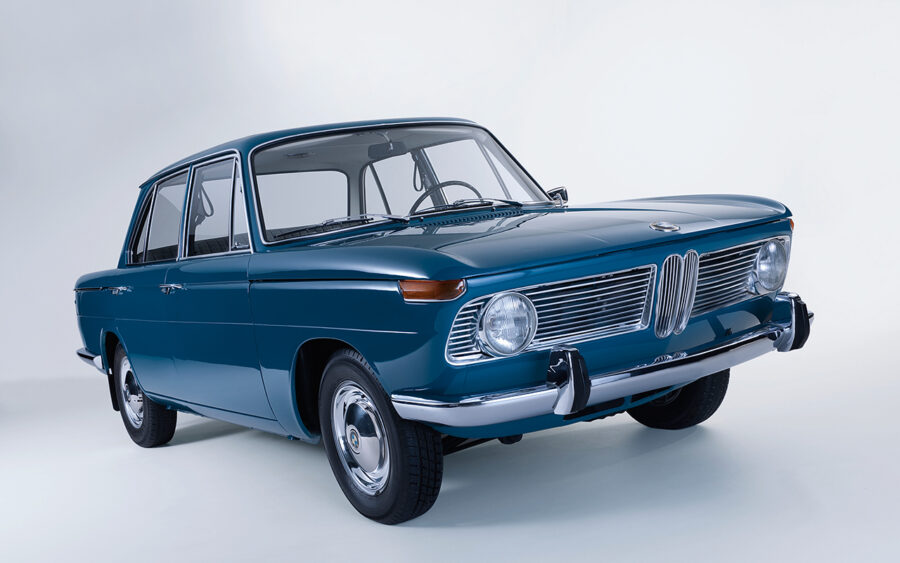
In the 1960s Mercedes-Benz was dominating the luxury market, so BMW re-entered the arena with the E3 saloon, known as the New Six in America – an effortlessly elegant large, luxury saloon powered by a six-cylinder version of von Falkenhausen’s four-cylinder engine. Known as the M30, it was an engine that would also serve the company well, powering all manner of BMW models and continuing in production until the early 1990s.
At the same time as the E3 was launched, BMW also entered the luxury coupe market with the E9, another timelessly elegant model that helped to secure BMW’s place in the public’s psyche as a manufacturer of desirable machinery. It would go on to become one of the world’s most successful racing cars – but that’s a story for the next decade when BMW really came of age.
1970s
Replacing the New Class saloon was BMW’s most pressing task; 1972 saw the debut of the first of BMW’s ‘Series’ cars that we’re all so familiar with today. The first 5 Series was launched at the Munich Olympics in 1972 – but that year is perhaps even better known in BMW circles as being the date when BMW Motorsport was founded to look after its motor racing exploits.
BMW M’s remit was to beat the Ford Capri on track in the European Touring Car Championship (ETCC). To do so it launched the 3.0 CSL version of the E9 coupe, a car so good that it won the ETCC in 1973, and then again for five consecutive years from 1975 to 1979. The racing car spawned the ultimate version of the model which was known as the Batmobile for its extensive aerodynamic wing kit that ensured high speed handling prowess.
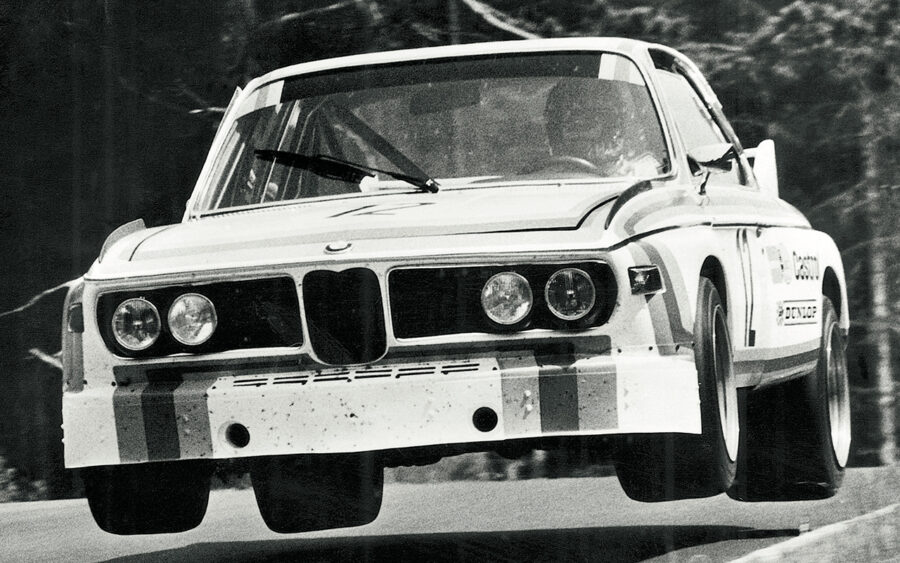
Development of production cars continued apace and BMW Motorsport had a hand in breathing new life into the old 2002 model with the launch of the 2002 Turbo, Europe’s first turbocharged production car. Sadly its launch coincided with the mid-70s fuel crisis, so the car wasn’t a commercial success.
More Series cars made their debuts with the E21 3 Series replacing the ’02 in 1975, while the first generation of 6 Series (which replaced the E9 coupe) arrived in 1976. The last piece of the model line-up was the debut of the 7 Series in 1977, which replaced the E3 Saloon. They were all successful, out-selling their predecessors, and the E21 3 Series would be the first BMW model line to sell over one million examples.
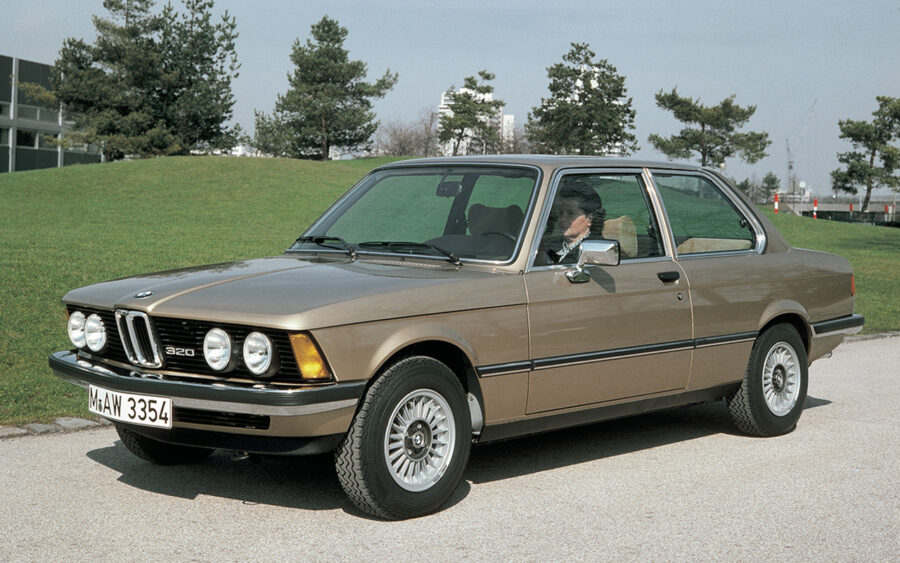
There was one last hurrah before the decade ended though: the debut of the BMW M1, the first dedicated machine to bear the M of BMW Motorsport. This mid-engined machine was penned by Giorgetto Giugiaro, featured a twin-overhead cam 24-valve straight-six rated at 277hp, and was BMW’s first and only supercar up until the arrival of the i8 several decades later. Racing versions competed in the Procar series which accompanied the Formula 1 circus in 1979 and 1980 and put on an amazing show, with the cars being driven by both Formula 1 drivers and those from other race series.
1980s
BMW’s new-found confidence and engineering know-how was ably demonstrated by its first Formula 1 campaign, which culminated with the BMW-engined Brabham BT52 winning the driver’s championship with Nelson Piquet at the wheel. The turbocharged BMW engine was reputed to be the most powerful on the grid and developed well over 1000bhp in qualifying trim.
Throughout the 1980s, BMW continued to hone and refine its model line-up with increasingly refined and sporty 3, 5, 7 and 8 Series models being launched with ever increasing levels of technology. In 1987 BMW stole the march on Mercedes-Benz with the first German V12 of the post war period, the 750iL, which used a 300hp 5.0-litre engine that was silky smooth and very refined.
During this time, BMW was also exploring new avenues in both automotive design and production techniques. In the mid-1980s it established BMW Technik as a think-tank free of the constraints of series production. Designers, engineers and technicians were able to come up with innovative ideas; the first fruit of this new department was the Z1, an innovative roadster with plastic panels and vertical sliding doors, an aerodynamic underfloor and exhaust and a new rear suspension system. It was only ever meant to be a concept but was so popular on the motor show circuit that BMW was forced to build it.
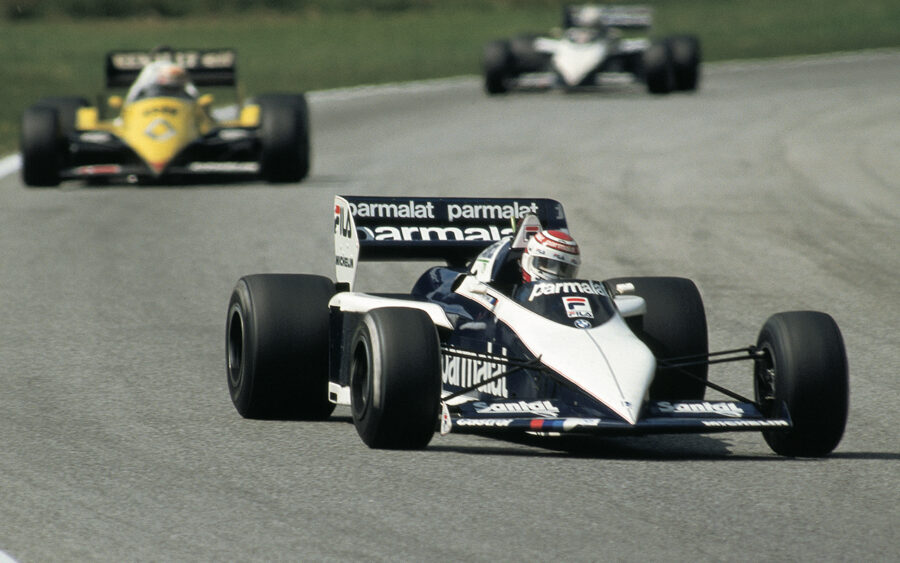
BMW M wasn’t resting on its laurels, meanwhile: ‘M’ versions of production cars were becoming the norm with both the M5 and M635CSi using a further-enhanced version of the M1’s engine to create a supersaloon and a high-performance coupe respectively.
The most iconic of M cars arrived in 1986: the E30 M3, a machine designed to take the racing world by storm. Based on the second generation 3 Series, it was thoroughly re-engineered by BMW M and featured a four-cylinder 2.3-litre engine designed by Paul Rosche who had also been responsible for BMW’s F1 engine and had taken over the mantle of in-house engine guru from von Falkenhausen. With enhanced suspension and bodywork, the M3 would go on to become the world’s most successful touring car.
1990s
This decade was one of expansion for BMW, both in terms of models and production numbers. To facilitate this, BMW needed additional production facilities; in 1994 its North American plant at Spartanburg, South Carolina was opened. Initially it built the new Z3 Roadster that had had a starring role in the Bond film Goldeneye, but it would go on to become one of BMW’s biggest plants.
Expanding its own range of vehicles wasn’t the only plan up BMW’s sleeve. 1994 was also the year that BMW purchased the Rover Group with the intention of expanding its model portfolio. The Rover Group comprised many brands including Land Rover, Rover, MG, Triumph and Mini; BMW tried to assimilate these companies into its product portfolio, a project that was ultimately doomed to fail. It culminated with BMW selling the Rover Group in 2000, with the sole company it retained the rights to being the Mini brand – officially stylised as MINI.
The Rover Group wasn’t the only takeover; in 1998, BMW acquired the brand and naming rights for Rolls-Royce motor cars, although it wasn’t until 2003 that it would launch a new model. Earlier in the decade BMW had also provided the engine for another British firm, McLaren, and the 6.1-litre V12 designed by Paul Rosche made the McLaren F1 the world’s fastest production car.
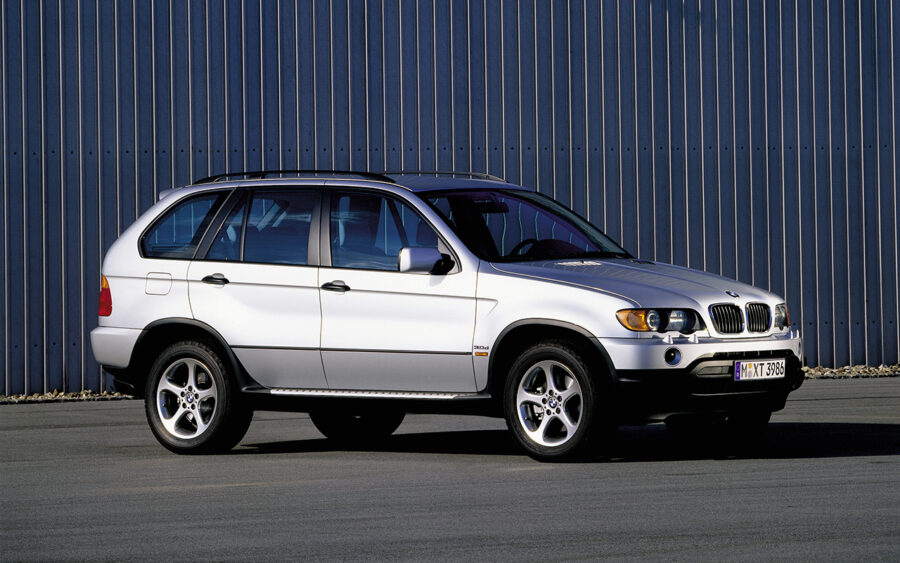
While the normal BMW production model cycles for the 3, 5, 7 and 8 Series continued through the 1990s, BMW did have one surprise left: the X5, launched in 1999. While there had been upmarket off-roaders before the arrival of the X5, BMW coined the phrase ‘Sports Activity Vehicle’ to describe its new 4×4, with a focus on combining traditional BMW dynamics and sporty ability with an all-wheel-drive off-roader. It was a phenomenal success that paved the way for a many more X cars in the following years.
2000s
The first decade of the new century was a busy one for BMW with the new BMW MINI starting production in 2001 at Plant Oxford, which the company had retained after the split from Rover. The new Rolls-Royce Phantom, which utilised much of the running gear of the then-current 7 Series, made its debut in 2003 and the products of both of BMW’s new brands arrived to almost universal acclaim.
The Rover debacle had left BMW with a hole in its proposed range, however; BMW needed a model to plug the gap between the MINI and the 3 Series models. Enter the very first BMW 1 Series, which came to market in 2004. It was unique in the hatchback market as it featured rear-wheel-drive where virtually every other manufacturer was using a front-wheel-drive platform. This made it the choice for keen drivers, even if it did hinder the car’s packaging somewhat. Further models would be launched in the 1 Series range, including a coupe and a convertible.
More X cars joined the line-up – the X3 in 2003, a new X5 in 2006, the X6 in 2008 and the X1 in 2009 – and they proved to be very popular with both traditional BMW owners and those new to the brand. The X6 is worthy of note as it introduced the concept of the ‘Sports Activity Coupe’ that was intended to blend the practicality and dynamics of the X5 with more sporty coupe styling.
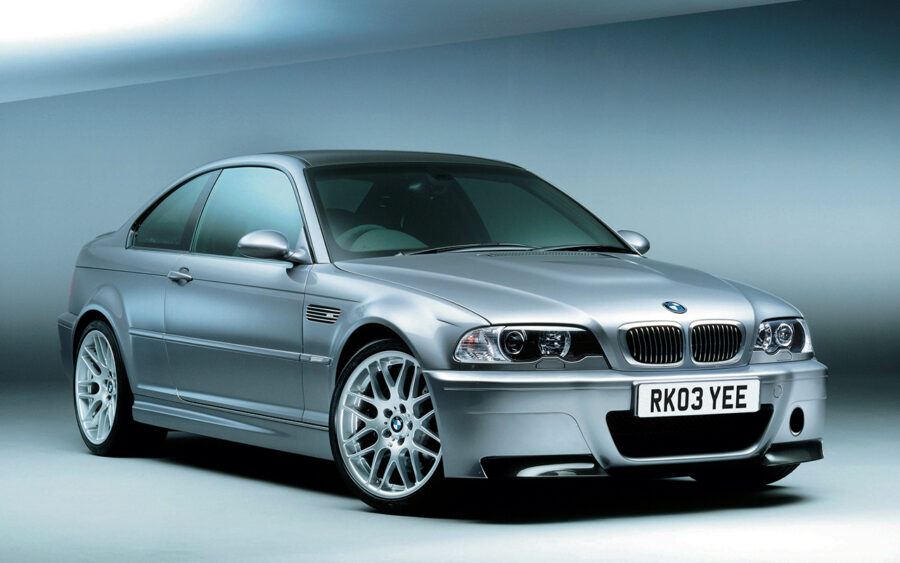
While BMW was expanding its model portfolio, its traditional customer base wasn’t forgotten; this decade saw the debut of two of the most iconic M cars yet. In 2003 the E46 M3 CSL was launched, an even more hardcore version of its high performance coupe with lightweight components (including a carbon fibre roof panel), more power, track-orientated tyres and bucket seats. In 2005 the E60-generation BMW M5 supersaloon made its debut complete with an F1-inspired five-litre V10 engine that would rev to an incredible 8,250rpm and produced 507hp.
2010 to present day
In more recent times BMW has further expanded its product portfolio; the 4 Series took the place of the 3 Series coupe, while various models spawned their own niche-filling variations, along with an almost-matching line up of X Series models, including the huge X7 and stylish X2. Production volumes soared from around 1.4 million cars per year in 2005 to 2.2 million in 2021.
The company has never been one to rest on its laurels, and throughout the most recent decade BMW has sought to discover new technologies to meet the future needs of its customers. Efficient Dynamics models use clever technology to reduce fuel consumption, while hybrid versions have been part of the model line up since 2010. Hydrogen has been part of the company’s make up for many years with small scale production of 7 Series models using this fuel and today BMW is testing hydrogen fuel cell vehicles, too.
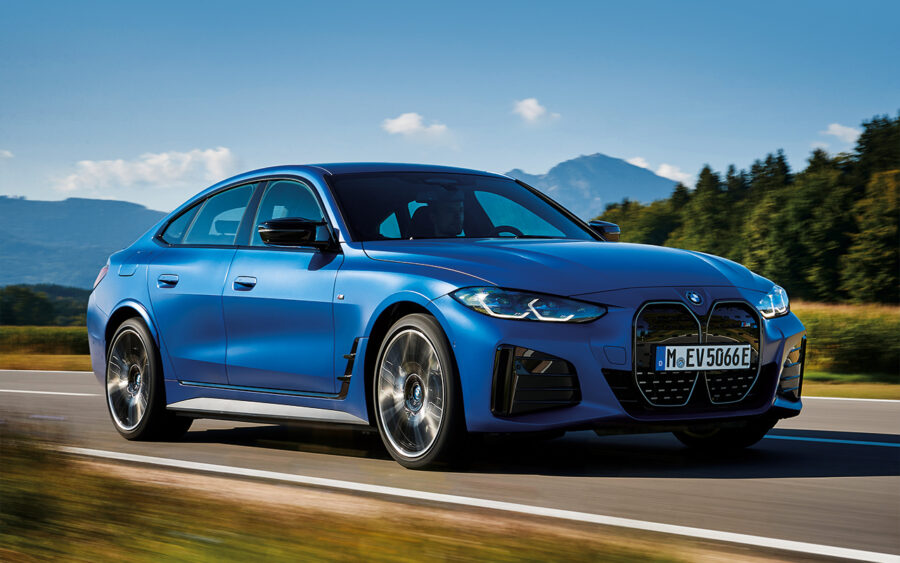
And of course, there’s the new push towards electrification. BMW was one of the first manufacturers to bring a car to market that was designed from the ground up as an electric vehicle, the BMW i3, that made its debut in 2013. It had a ground-breaking carbon structure and composite panels along with an interior constructed from sustainable materials such as bamboo.
It might have been a little bit too early for the market to fully embrace the i3 but it demonstrates what BMW has been so good at all these years – coming up with innovative engineering solutions that will no doubt stand it in good stead for the coming years as we move away from the internal combustion engine. Its all-electric legacy continues with the i4 and iX – and looks set to be rolled out across the whole range in due course.
